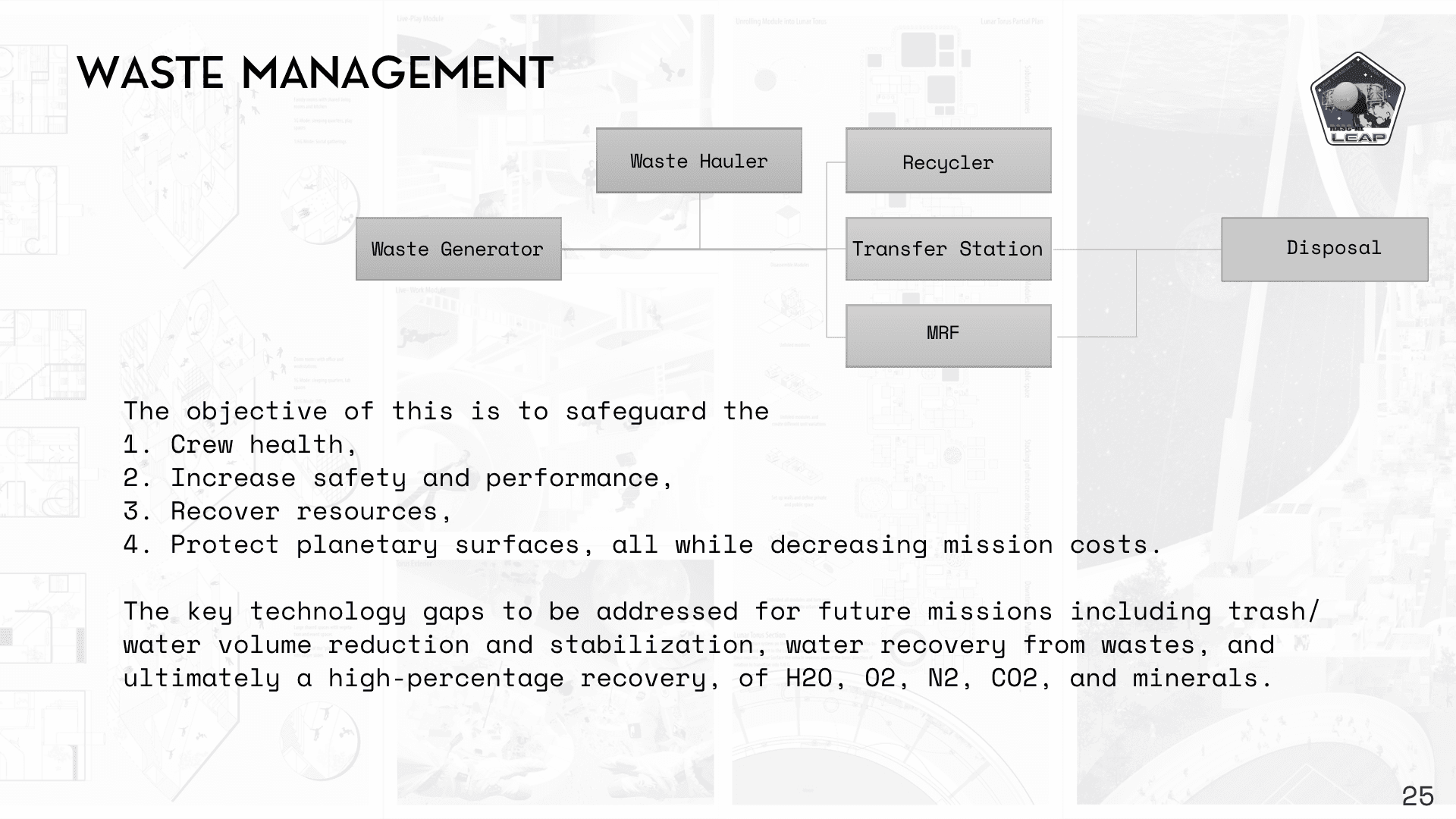Category:
Space Architecture & Systems Engineering
After the initial Artemis mission lands the first woman and the next man on the Moon in 2024, the Artemis program will continue with longer and bolder missions on the lunar surface throughout the 2020s.
A key enabling system for those future missions will be a habitat that can support the crew on the lunar surface as they continue exploring the Moon and prepare for future missions to Mars. To leverage developing commercial lander capabilities, NASA is interested in a low-mass habitat that can be used on the lunar surface.
For this theme, teams will design a durable, low-mass habitat that can support a crew of 2 for 30 days at the lunar south pole, with a dry mass limit of 6,000 kg. The habitat should be ready for first use in 2028, with an annual budget of no more than $1 billion per year from 2022-2028 (including delivery to the lunar surface).
Teams should create a development timeline with a realistic technology portfolio to achieve that date credibly. The habitat should be reusable, as it will serve as the starting point for expanding to greater crew capabilities on the surface and for preparing for Mars missions. Thus, teams should identify how their habitat can be used to support both of these goals.
LEAP is optimized to pre-integrate every required system. The application of engineering and design thinking resulted in a space habitat fitted with state-of-the-art engineering, communication, and life-support systems. This multi-system collaboration provides the most reliable, safe, and comfortable habitation for the crew during surface operations. To learn more, explore the slide show below.
The LEAP Habitat is inspired by recreational vehicles (RVs) and their ability to expand and contract easily. Expanding the habitat affords more capabilities for the crew's mission while retracting specific areas of the habitat makes it easier to transport and deliver. Click through the slideshow below to learn more.
The University of Houston
MS in Space Architecture
Sasakawa International Center
For Space Architecture
LEAP Team
Gerardo Cambronero
Team Lead - Designer
Jasleen Kaur
Aerospace Engineer
Pranita Khedkar
Architect
Ricardo Miguel
Systems Engineer


















































